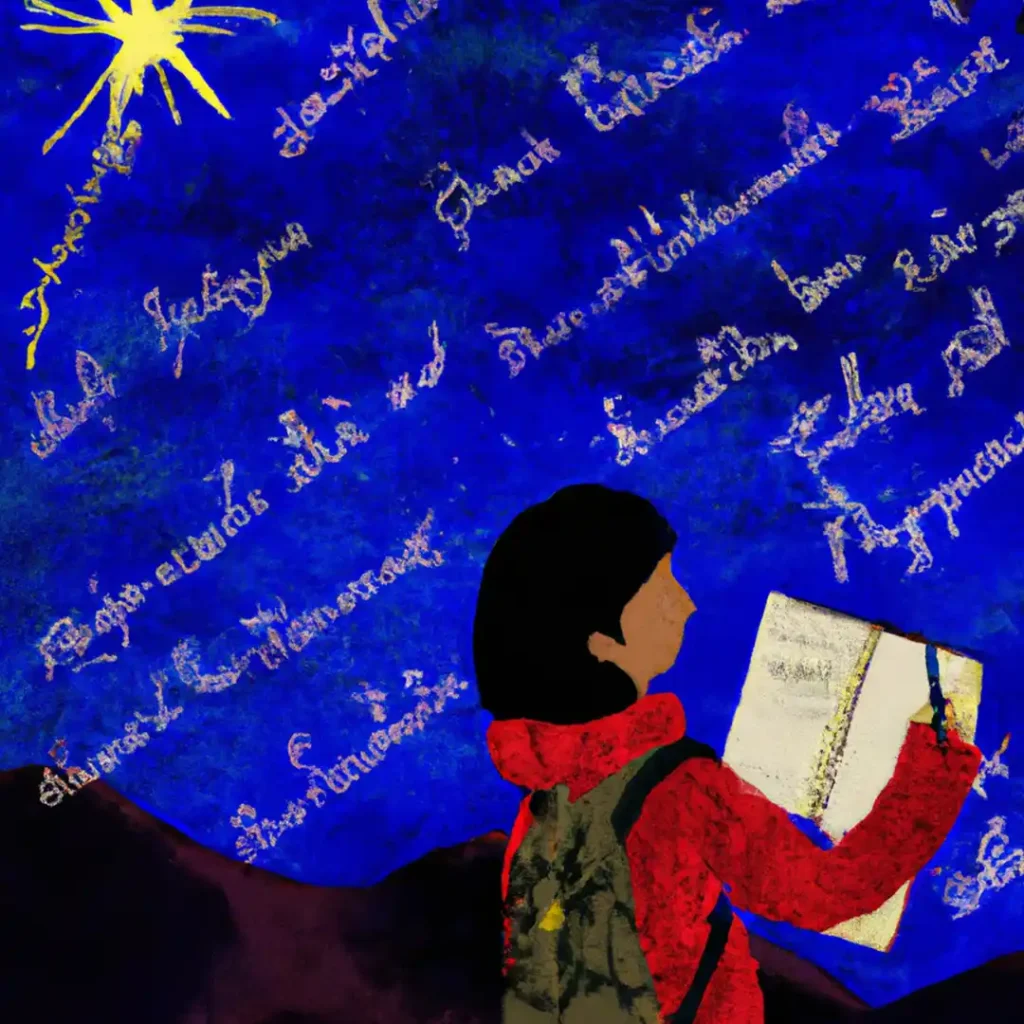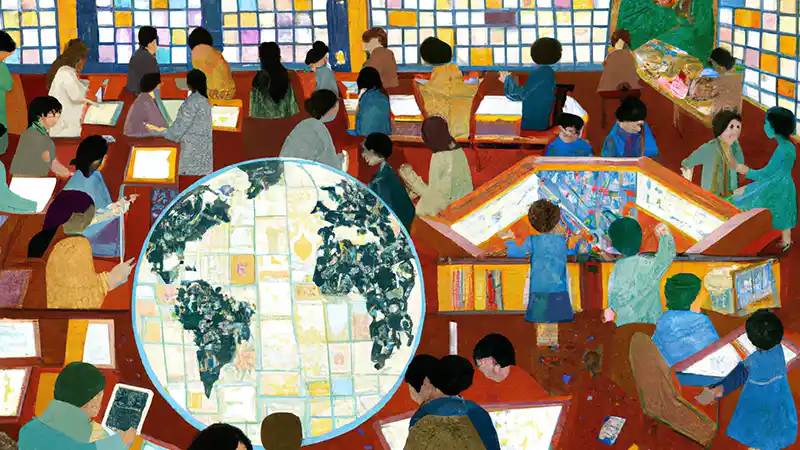In the labyrinth of learning, the pathways we carve for students often neglect the diverse tapestries of their experiences. This, in a world that is rapidly globalizing, demands introspection. Differentiated instruction for ELL (English Language Learner) students is not merely an academic necessity—it’s a testament to our adaptability, our respect for the multitudinous facets of human expression. As educators, artists of pedagogy, the rise in the numbers of English Language Learners in schools isn’t merely a statistic; it’s a call to action, a plea for understanding.
The modern classroom, with its structured lines and graded assessments, often forgets that the soul of learning is curiosity. And what could be more curious, more daring, than diving into the vast oceans of a new language? These ELL students, bearing the double weight of content and language, are the unsung heroes of our time.
Understanding ELL Students
But who are these brave voyagers on the cusp of linguistic transformation? ELL students are those who tread the delicate line between two worlds. Theirs is a narrative of migration, of change—sometimes by choice, and sometimes by the unyielding hands of circumstance. They come with rich histories and stories woven in the threads of their native tongues, seeking to add another chapter in the universal language of English.
Yet, their journey in an English-dominated classroom isn’t without its shadows. The unique challenges they face are not simply in the conjugation of verbs or the intricacies of grammar. It is in the attempt to preserve their identity while assimilating into a new culture. It’s in the nuanced silences when their voice, vibrant and clear in their mind, struggles to find the right English words. The challenge is both linguistic and existential. The English-speaking classroom, then, becomes a stage where these challenges play out—a space where the lines between learning and unlearning, between embracing and letting go, blur.
In the writings of Susan Sontag, there’s an insistence on the importance of interpretation, of the multiplicity of meanings. This is no less true in the realm of teaching. To truly reach the heart of an ELL student’s experience, we must employ a similar interpretative lens, understanding that behind every missed article or misplaced preposition lies a world of context, culture, and history.
Thus, as we delve deeper into the realm of pedagogy, let us remember that teaching ELL students is not just about imparting language—it’s about embracing diversity, understanding narratives, and above all, recognizing the resilient spirit of those who dare to learn anew.
The Importance of Differentiation

Amid the cacophony of instructional strategies, differentiation stands out as an art form—like the careful orchestration of a symphony with myriad instruments. Differentiation in instruction is the act of tuning into each student’s unique frequency, acknowledging that education cannot be a one-size-fits-all endeavor. In the context of ELL students, this takes on even greater weight. Without differentiation, we risk creating an echo chamber where only the loudest (or most familiar) voices are heard.
The true impact of differentiation on ELL student success is monumental. It’s not just about scores and grades—it’s about self-esteem, empowerment, and the sense of belonging. Differentiation ensures that these learners aren’t lost in translation, but are actively engaged, with their unique backgrounds and perspectives valued.
Key Strategies for Differentiating Instruction for ELL Students
Visual Aids and Multimedia
In the age of digitization, the screen isn’t just a tool; it’s a canvas. For ELL students, visual aids and multimedia become the bridge between the known and the unfamiliar. These visual elements can often transcend language barriers, allowing for understanding even when words fail. Incorporating multimedia isn’t just about flashy presentations; it’s about providing a multisensory experience, a rhythm to which even the most tentative English speaker can sway.
Simplified Language and Vocabulary Preview
Language, in its essence, is both intricate and beautiful. But for the novice, intricate can easily become overwhelming. Breaking down complex ideas with simpler words doesn’t dilute the content; rather, it makes it accessible. And herein lies the power of previewing vocabulary—a foretaste, a gentle introduction before plunging into the depths of a lesson. This approach not only builds confidence but ensures that when the broader concept is introduced, it isn’t alien.
Group Work and Peer Tutoring
The classroom, akin to a microcosm of society, thrives on interaction. Group work and peer tutoring aren’t just about completing tasks; they’re about fostering a community. This is especially true for ELL students. Integrating them with native speakers in diverse groups allows for a rich exchange. The peer dynamics often lead to organic, informal learning moments that structured lessons might miss.
Education, at its core, is a process of building—laying one brick at a time, constructing a monument of knowledge. Scaffolded instruction embodies this philosophy, ensuring that ELL students have a firm foundation before adding layers of complexity. It’s not about hand-holding, but hand-leading, guiding them through each step with patience and precision.
Use of Native Language Support
To understand the importance of native language support, one must first acknowledge that language is identity. For ELL students, their native tongue is a reminder of home, of comfort. Leveraging this in the classroom doesn’t mean forsaking English immersion. Rather, it’s about striking a balance, ensuring that while they journey through the realms of English, they aren’t unmoored from their linguistic roots.
Cultural Sensitivity and Relevance in Differentiation
Dwelling within the sonorous realms of language lies the vibrant tapestry of culture. To speak a language is not merely to articulate sounds but to invoke histories, traditions, and worldviews. The ELL student doesn’t just bring a different tongue to the classroom; they bring an entire universe of experiences. As Susan Sontag once remarked, “Interpretation is the revenge of the intellect upon art.” In this context, interpretation extends to understanding the soul of a culture, not just the words it speaks.
Understanding cultural backgrounds is crucial for effective differentiation. It informs the educator about the student’s frame of reference, allowing them to tailor instruction in a manner that resonates. It’s not about pandering to stereotypes but about recognizing the nuanced intricacies that make each culture unique.
Incorporating culturally relevant content into lessons is akin to extending a hand of friendship. It signals to the ELL student that their history matters, that their stories are worth telling. This isn’t just about inclusion; it’s about celebration. Whether it’s referencing a famous poet from their homeland or exploring a historic event from their country, these touches can make lessons come alive for ELL students, rendering the unfamiliar familiar.
Tech Tools and Resources for Differentiated Instruction
In the rapidly evolving panorama of the digital age, technology has emerged as the great equalizer. It offers possibilities previously unimagined, especially in the realm of education. For ELL students, tech tools can often be the bridge between confusion and clarity.
There exists a plethora of tools designed explicitly for ELL support. Platforms that offer real-time translations, apps that facilitate vocabulary building through interactive games, and software that provides nuanced grammar lessons tailored for various proficiency levels. Digital books that read aloud, ensuring pronunciation isn’t a stumbling block. Virtual reality experiences that immerse students in English-speaking environments, fostering organic learning.
The power of these tools isn’t just their innovative nature; it’s their adaptability. They can be customized to cater to each student’s pace, ensuring differentiation isn’t a lofty ideal but a tangible reality.
Moreover, technology can bridge the geographical gap, connecting ELL students with native speakers across the globe, facilitating exchange programs without the need for travel. This not only enhances their linguistic prowess but broadens their cultural horizons.
Continuous Assessment and Feedback

In the vast expanse of education, there is a beacon that guides the way—feedback. For the ELL student, the terrain of a new language is fraught with unknowns, and feedback becomes the compass, guiding them through treacherous waters. However, it is not merely the end-point assessments that matter; it’s the continuous, everyday check-ins, the subtle nods of understanding, the gentle nudges when they stray off the path.
Regular check-ins with ELL students do more than just gauge comprehension; they provide assurance. They send a clear message: “You are seen. You are heard.” This acknowledgment can make all the difference in a classroom where they might often feel lost in the sea of native speakers.
Yet, the beauty of feedback is not just in its provision but in its reception. As educators, we must be willing to adapt, to metamorphose. The feedback from ELL students—whether explicit through words or implicit through performance—provides invaluable insights. It’s a mirror reflecting the efficacy of our methods, urging us to tweak, modify, and sometimes, reinvent.
Conclusion
The realm of differentiated instruction for ELL students is not just a pedagogical challenge; it’s a human endeavor. It’s a dance between two worlds, where every step, every gesture, speaks of a deep yearning to connect, to understand, to belong. The importance of this dance cannot be understated, for it embodies the very essence of education—transformation.
As the curtains fall on this discourse, a clarion call goes out to all educators. Let us not be rigid custodians of old methods. Let us be malleable, ever-evolving. In the words of Susan Sontag, “The only interesting answers are those that destroy the questions.” Let us, then, seek answers that not only address the challenges faced by ELL students but obliterate them.

